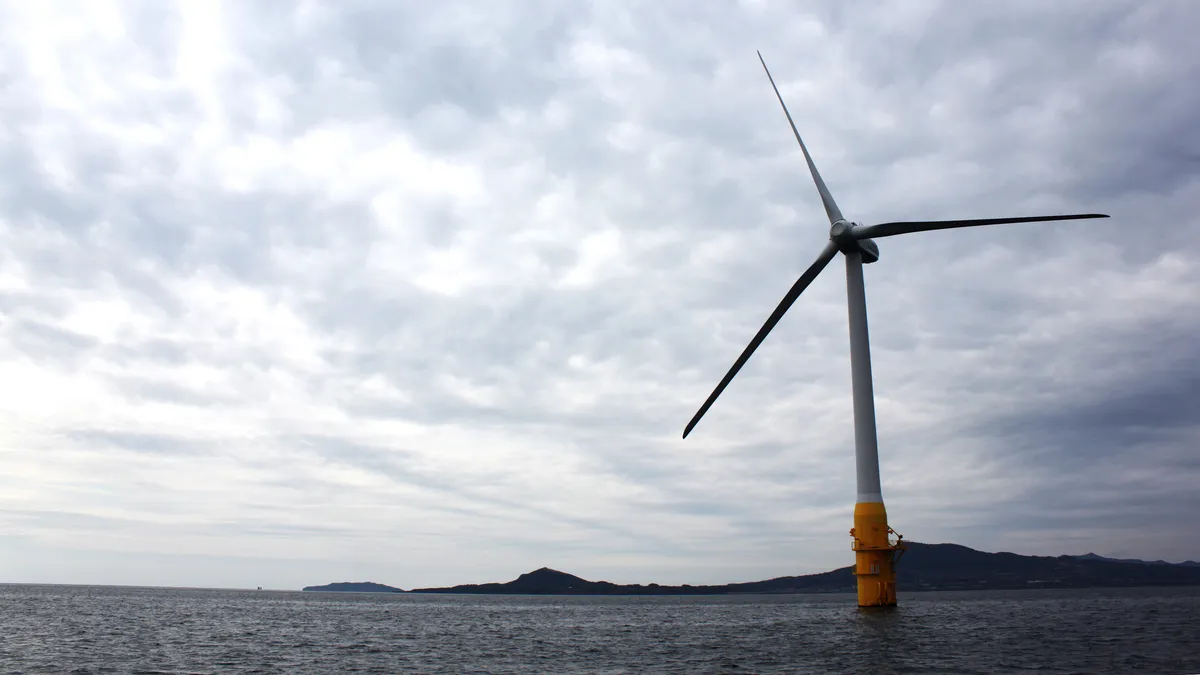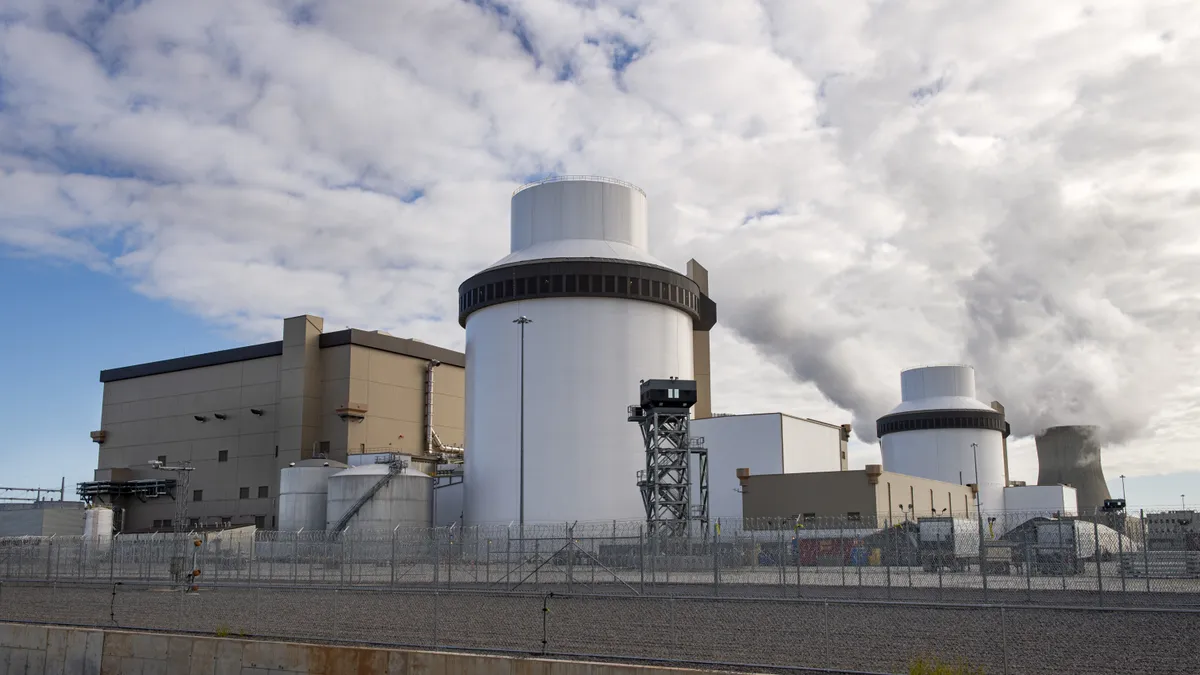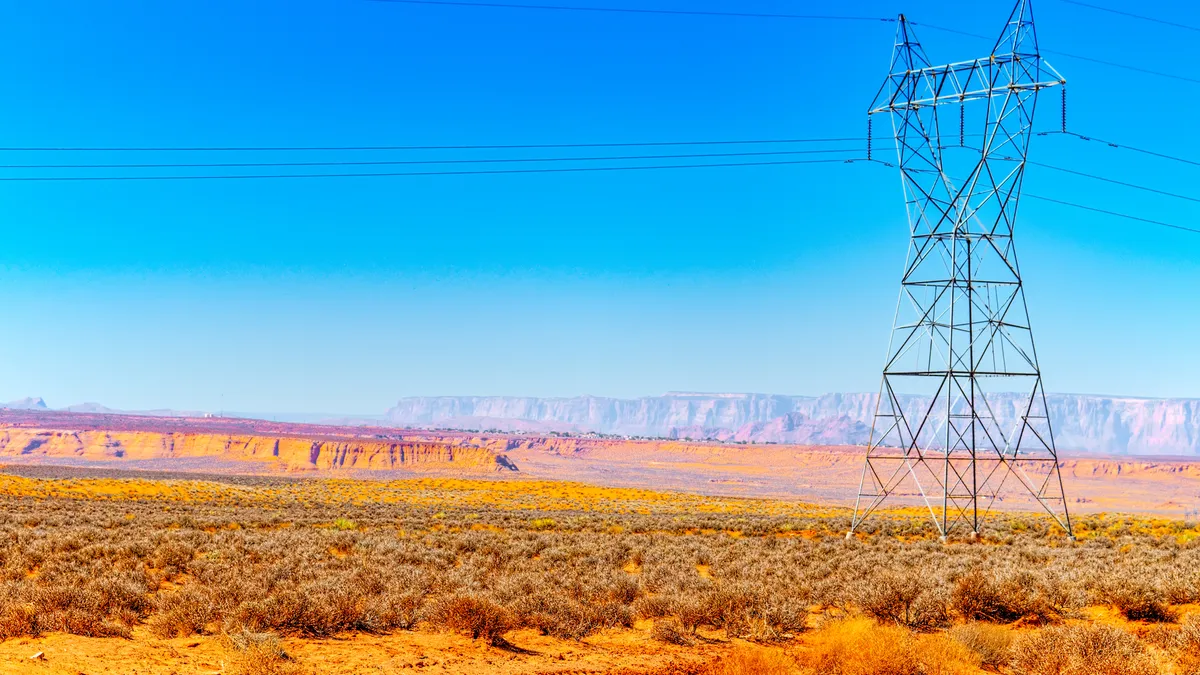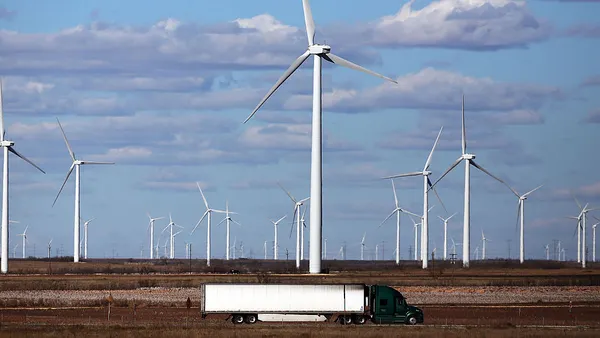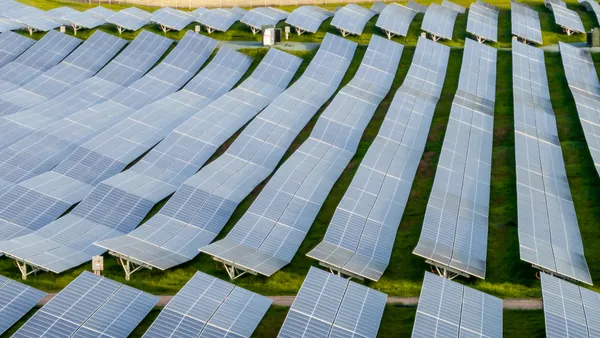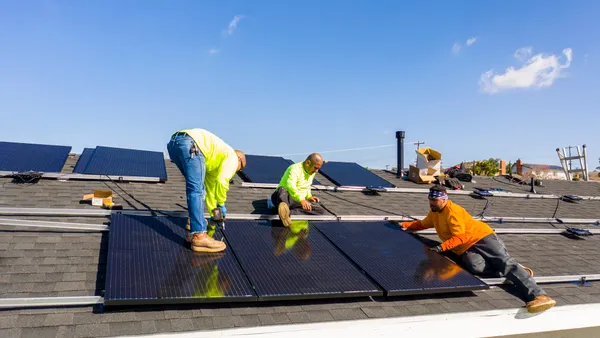Dive Brief:
- The New Jersey Board of Public Utilities (BPU) on Wednesday announced plans for a second offshore wind solicitation this fall, ranging between 1.2 to 2.4 GW of capacity.
- Gov. Phil Murphy, D, issued an executive order last November to increase the state's offshore wind capacity target from 3.5 GW by 2030 to 7.5 GW by 2035. Ørsted's 1.1 GW Ocean Wind project won the state's first solicitation in June 2019 and is expected online in 2024. The draft solicitation could help the state meet its 2030 target.
- State regulators scheduled a virtual public meeting to accept input on the draft of the second solicitation on Aug. 5. The BPU plans to consider the solicitation at its September meeting, accept applications in December and make a final decision in June 2021.
Dive Insight:
Like neighboring New York, which issued a 2.5 GW solicitation for offshore wind this week, New Jersey is working on an aggressive timeline to continue its development of offshore wind.
The BPU seeks to issue five offshore wind solicitations every two years, from 2020 to 2028, according to the draft. The first three solicitations would be at least 1.2 GW, and starting in 2026 the solicitations would target 1.4 GW.
The current draft of the solicitation will consider whether the project includes energy storage capabilities. The state adopted an energy storage target of 2 GW by 2030, along with interim targets in 2021.
"Offshore wind is the linchpin of our clean energy program and will help us reach Governor Murphy’s goal of 100% clean energy by 2050, build an innovation economy, and combat the impacts of climate changes," NJBPU President Joseph L. Fiordaliso said in a statement.
State regulators are working with New York and others to build out offshore wind and plan transmission access for future development.
"We have met with representatives of many of our neighboring states, either in groups or individually, over the past several years to discuss offshore wind mat[t]ers, including transmission planning, solicitation schedules, industry trends, and to generally share lessons learned," BPU spokesperson Peter Peretzman said.
New Jersey applicants would have to show they are eligible for the PJM Interconnection queue or are already in PJM's queue. The project must indicate its points of interconnection to the PJM system serving New Jersey and show that it will address constraint problems with the electrical distribution system or PJM's transmission system.
The draft also inquires into the use of technologies to reduce the demand for peak electric generation and improve grid reliability.
Developers in the area are eyeing both the New York and New Jersey's recent solicitations, but there are sufficient leasing areas and market opportunity to serve both solicitations, according to the New York State Energy Research and Development Authority (NYSERDA).
New York and New Jersey's goals "are self-reinforcing," according to Doreen Harris, acting president and CEO of NYSERDA, said during a webinar with the Business Network for Offshore Wind on Thursday. "The New York and New Jersey region has emerged as really this center of gravity for the U.S. industry," due to "the strong coastline in the industry that is well-suited to serve this demand" and because the state goals create "a tremendous market pull."
Regulators estimate that the project selected for the 2020 solicitation will be commercially operational by 2027.
Comments are due on the solicitation draft by Aug. 19.



